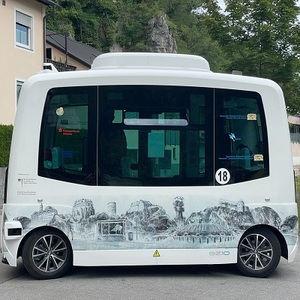

Over the past 5 to 10 years there has been a proliferation of automated vehicle (AV) technology available to consumers when buying late-model cars. AV refers to any technology that aids a vehicle to operate by itself with varying amounts of driver interaction. From simple lane-keep assist systems and automatic braking, which can aid in accident avoidance, to the more recent autonomous or self-driving vehicles, these technologies present a potentially promising future but also one filled with many unknowns: technologically, ethically, legally, etc. One of the major hurdles in the development of autonomous vehicles, especially, is weather.
Autonomous vehicles rely on a variety of sensor, camera, and/or communications technologies to accomplish their self driving. When these technologies become impaired by weather, from sun glare overwhelming cameras, to heavy precipitation obscuring sensors, to variable snow cover creating fast changing driving conditions, autonomous vehicles can struggle to maintain safe driving. There are still open questions, as well, such as will an autonomous vehicle be able to differentiate between a wet road and an impassible, flooded road? Also, what happens when a vehicle encounters other dangerous events like large hail, severe winds, ice-coated roads, etc.?
That's why a 2020 study by a team of meteorologists and information/transportation technology consultants has urged improved cooperation between these two broad sectors. The inaugural Automated Vehicles and Meteorology Summit was only first held in 2018 in Washington D.C. It had relatively limited attendance from representatives in the transportation sector. According to this study, the proprietary nature of the AV industry, as well as the competitive nature of the business world do not lend themselves to broad collaborations between the sectors.
Once this collaboration is achieved, though, it is not only the transportation industry that could benefit with improved AV technology, the meteorological sector could also benefit from many of the connected technologies that AVs employ, i.e. providing a wealth of previously unavailable surface weather observations, alerting road maintenance crews to deteriorating road conditions.

